The Portuguese and in particular the natives of LISBON (yes all 3 million of them) love Sintra. Join us on our day trip to find out why.
Set in lush forest, crowned with a Moorish Castle and the home of a royal palace, World Heritage Listed Sintra is known as the Jewel of Portugal. The fact that it is definitely a fully fledged tourist village did not diminish our enjoyment of the day.
These two well known Portuguese symbols can be purchased in many forms throughout Portugal, these two found in Sintra.
The Cock of Barcelos. Azulejos – Decorative Ceramic Tiles.
Apart from the afore-mentioned millions, many others have enjoyed Sintra over the years.
- The Romans worshipped the Moon Goddess here and named the site Cynthia.
- Then the Moors arrived and were so enamoured by the lush vegetation, that they built a hilltop castle, a palace and fountains.
- When the Portuguese Royal family took up summer residence in the former Moorish Palace, many wealthy aristocrats arrived to build mansions and villas.
The best way to arrive in Sintra from Lisbon today, is by train from Rossio Station. This wonderful old station (1887), recognized by it’s purple horseshoe shaped doorways, is situated between the busy Restauradores Square and Rossio, the elegant main square of Lisbon. I tell you this, because even following directions from the tourist centre, we took a while to find it.
The train starts it’s journey in an underground tunnel built in 1890, but surfaces before the first station.
Rossio Train Station, Lisbon.
5 Euro each, and forty minutes later we arrived at our stop – the line terminus. No need to worry about peak hour madness because while the crowds are heading in to Lisbon, Sintra visitors are heading away, and vice versa. Not that we had managed to be early enough for peak hour.
On arrival there was a bus to the town centre, but instead we took the 1.4 km slightly uphill walk. In Spring 2012, skies were sunny, views tantalizing and the path, lined with sculptures.
Photos are in order from the train station.
Random Old Gate, Path and House.
Town Hall. 1910.
A royal palace since the twelfth century, but originally built by the Moors in the Tenth Century, the twin conical kitchen chimney cones of the Royal Palace, below, are the town’s most famous landmark. (This palace is situated in the town proper and is not to be confused with the Pena National Palace which together with the Moorish Castle Ruins perch on a hilltop overlooking the town).
I can’t help thinking that with a fall of chiffon from the palace chimney peaks, they could be turned into giant medieval princess hats. Actually, I think the people of Sintra should do this on an appropriate occasion like a Medieval festival!
After the revolution of 1910, the palace became a national monument and today it houses the world’s most extensive collection of Mudejar ceramic glazed tiles. (Mudejar being the name given to Muslims who kept their faith but stayed after the Christians took power).
The path was lined with Statues.
A glimpse of Sintra through the trees.
I have saved my favourite Statue till last.
There were many more statues of varying subjects, but I chose a feminine theme.
Join me next week for more on The Jewel in Portugal’s Crown.
Things to Know and Budget Tips.
As a medieval town Sintra was not built for vehicles. In June the streets are blocked with cars and there is little parking. If you are not coming from Lisbon where trains/buses (buses have their own parking area) are the best options, read this for Sintra PARKING information. If you can not get into a free park, you would have to return every two hours to pay for more parking.
Prices are more expensive than in Lisbon, but we were happy to pay for our Pastel de Nata and coffee.
Avoid visiting “The Jewel” on week-ends and public holidays if you do not like crowds. Monday 28/5/2012 had minimal crowds.
Which statue was your favourite?
MAKE SURE TO LOOK AT BUDGET TRAVELERS SANDBOX FOR TRAVEL PHOTO THURSDAY.

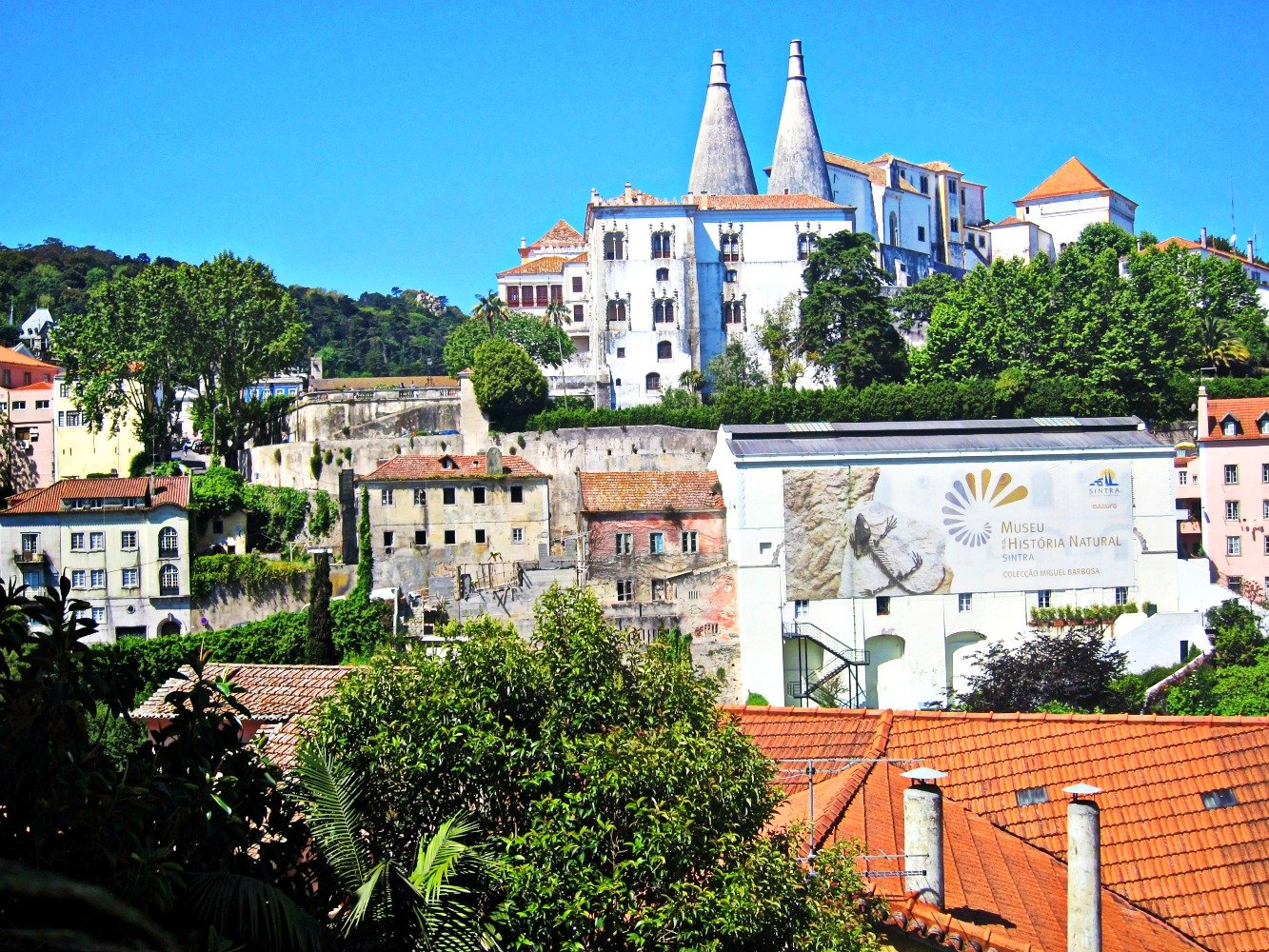
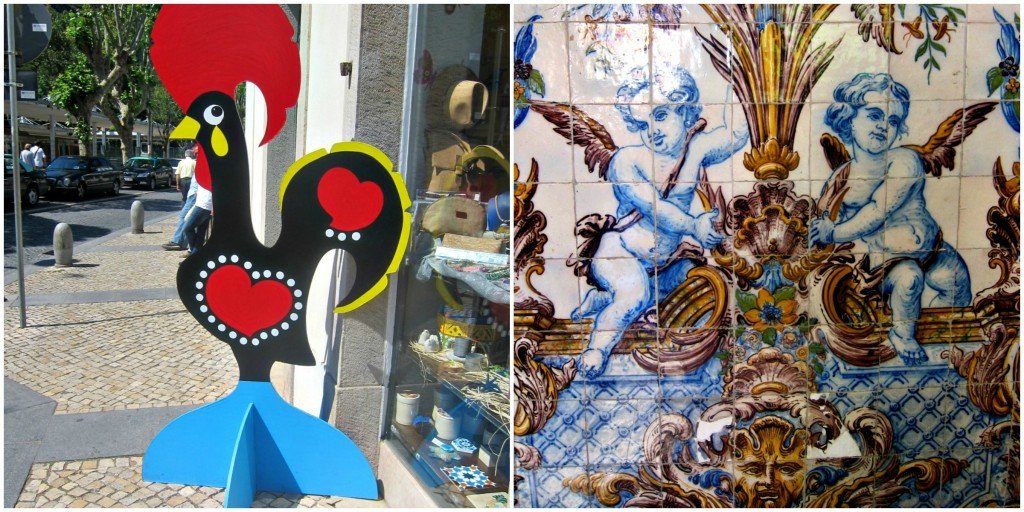
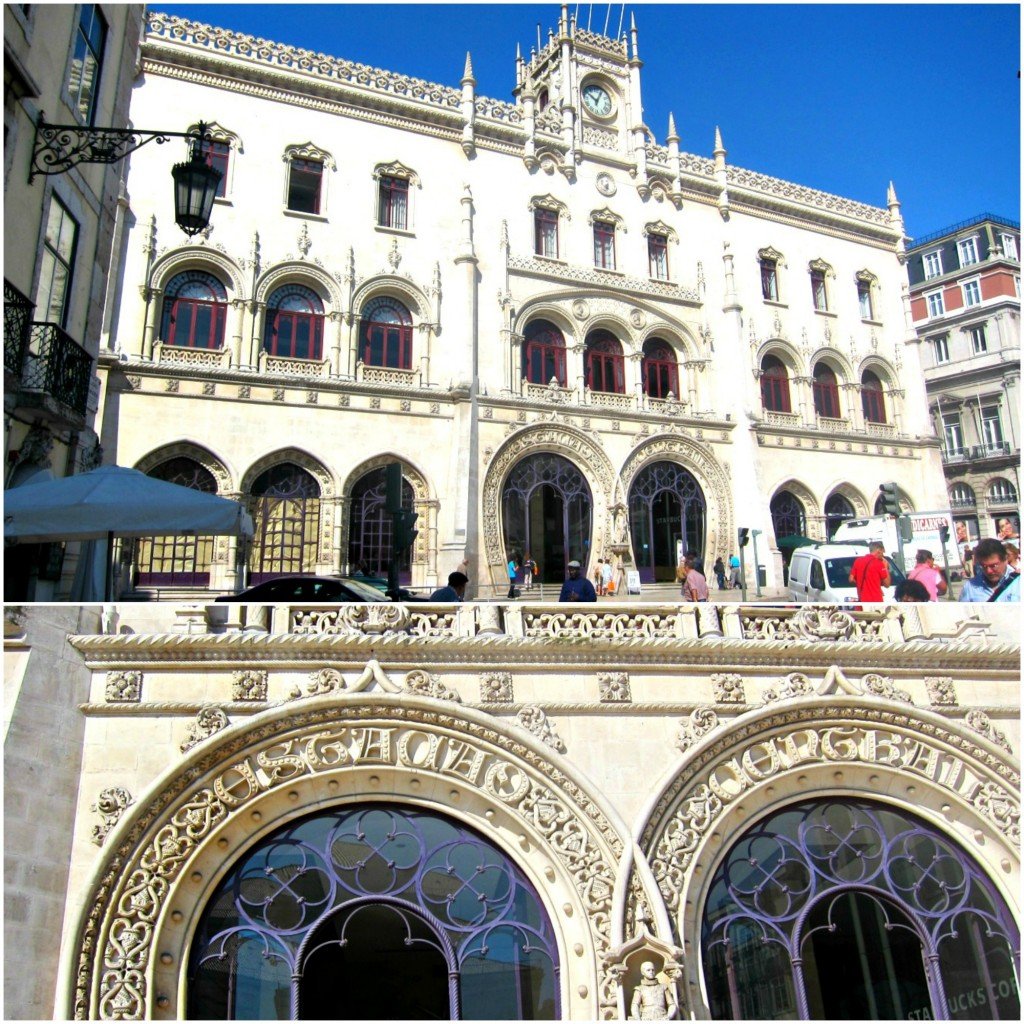
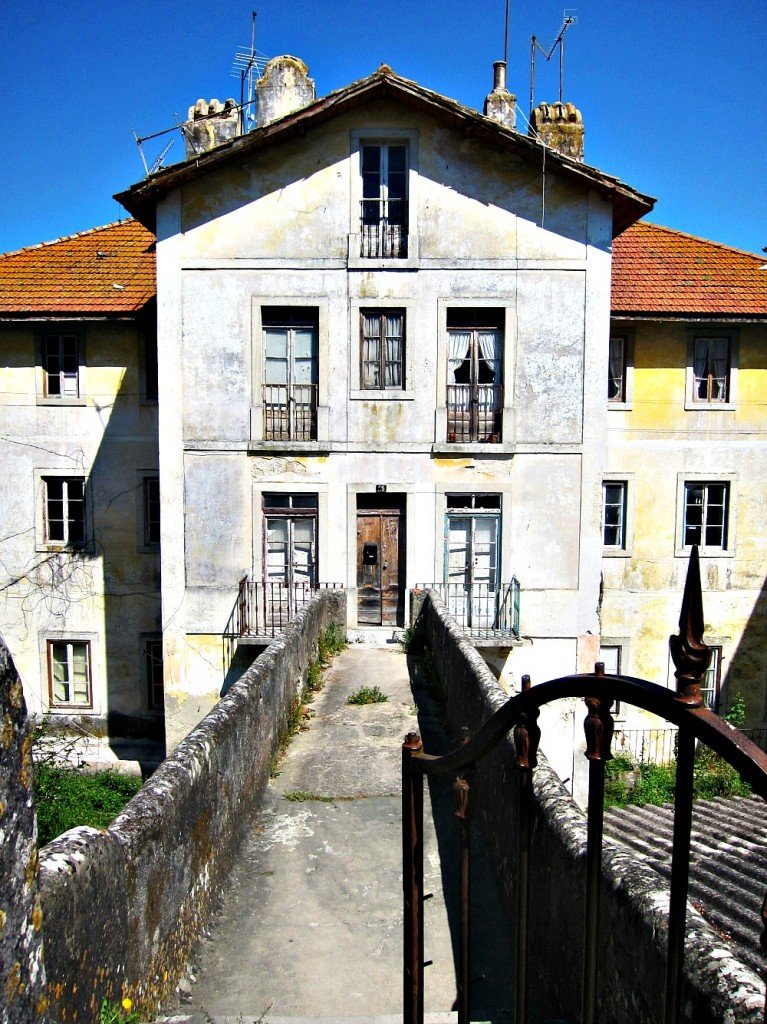
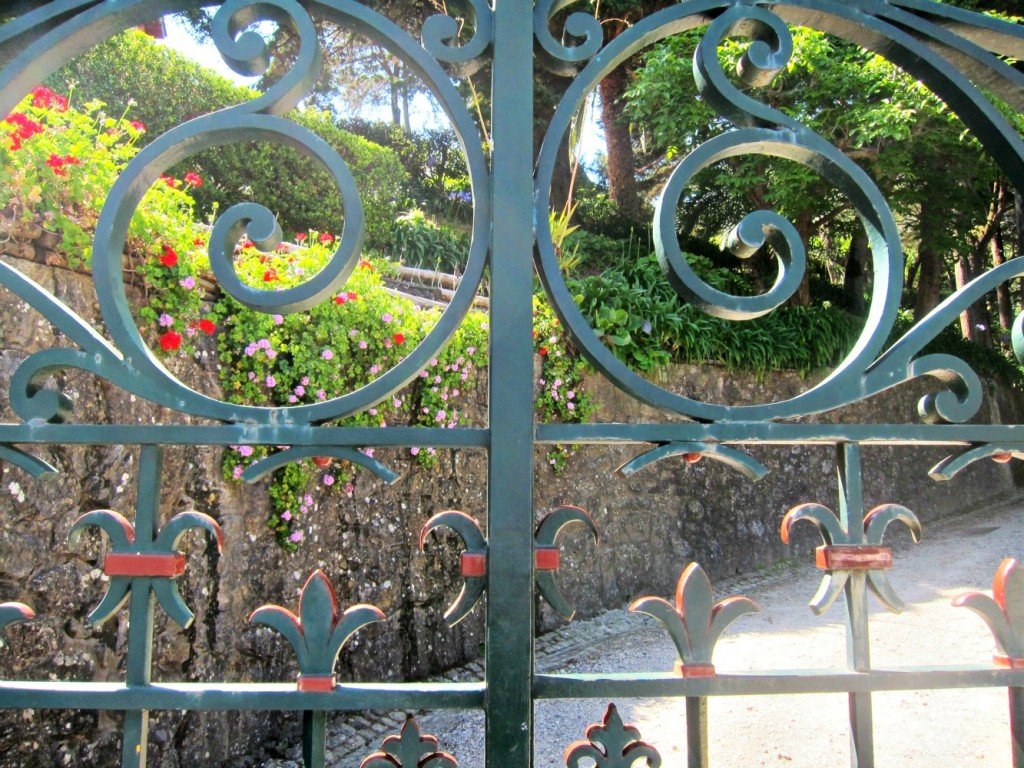
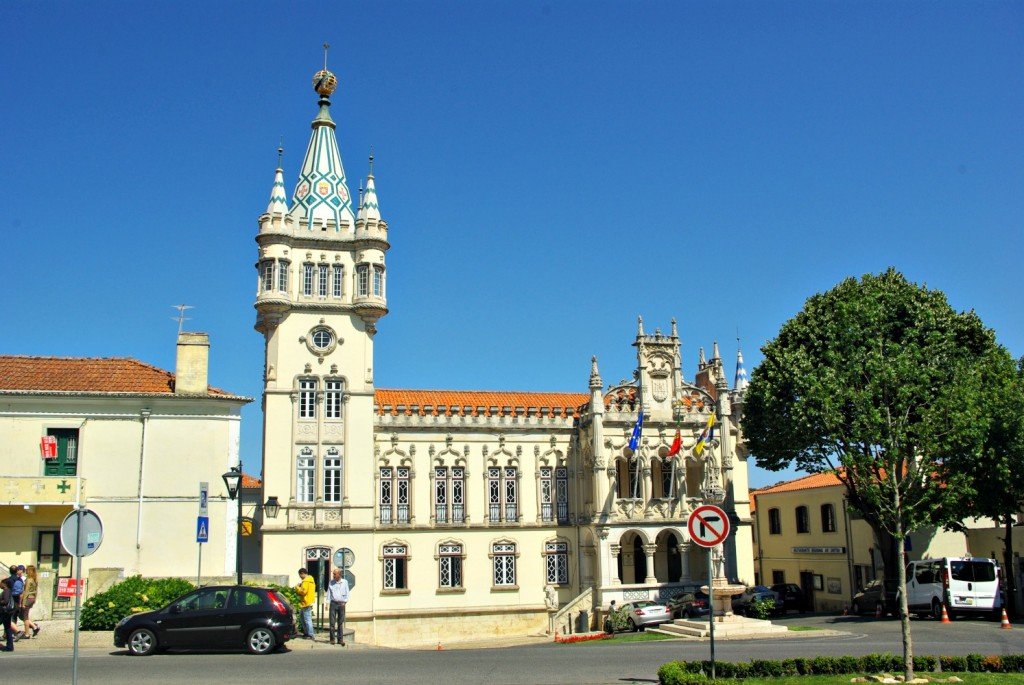

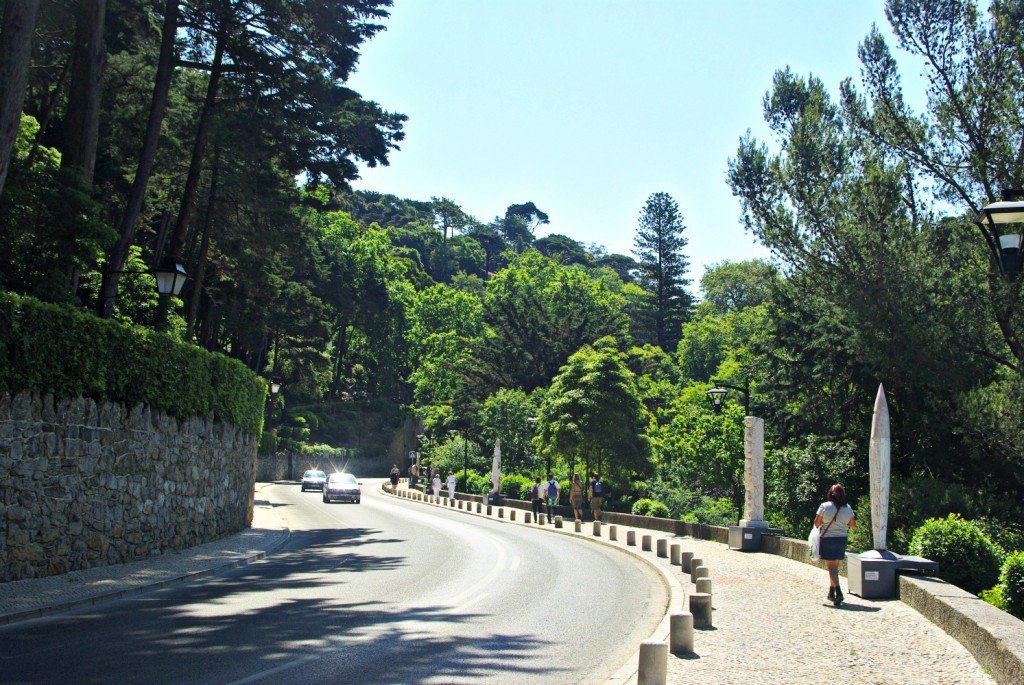
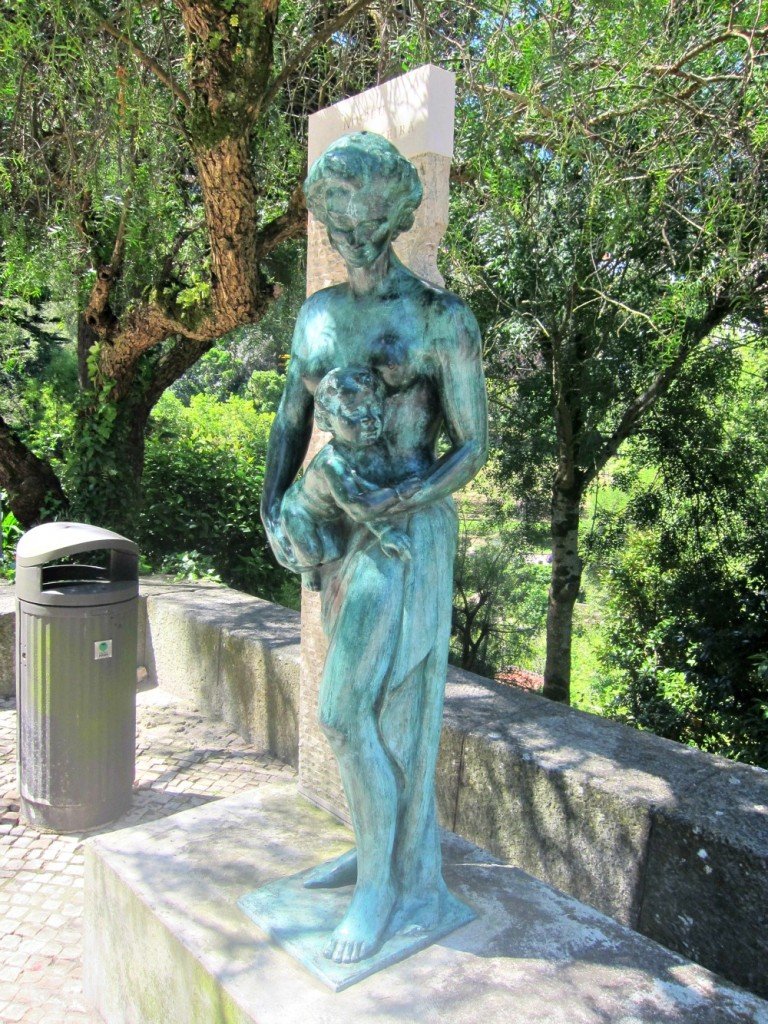
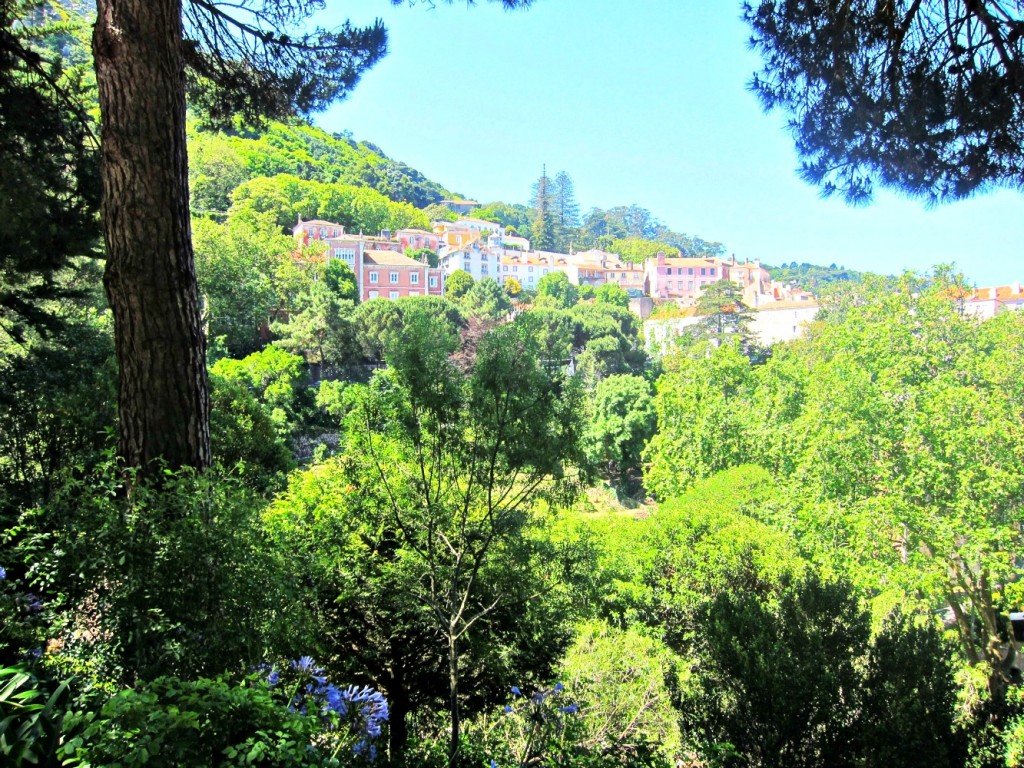
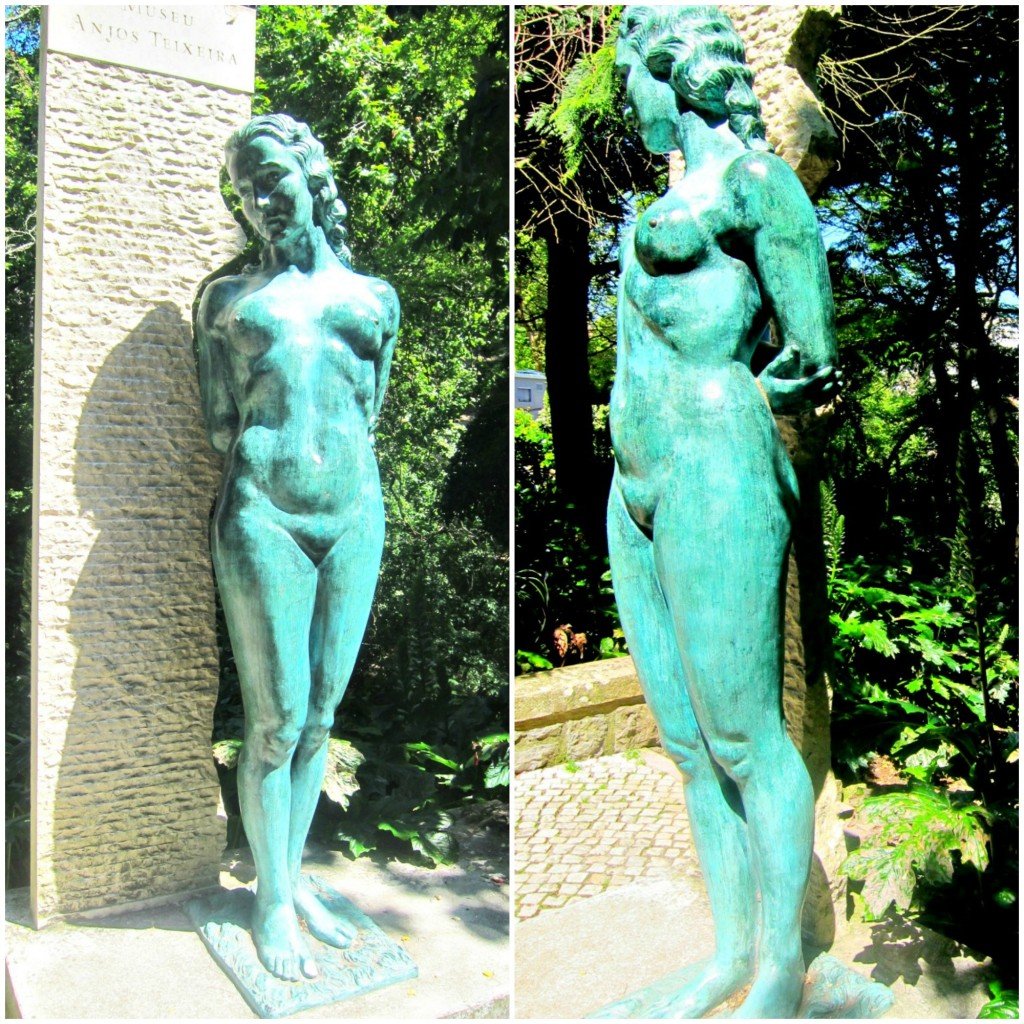
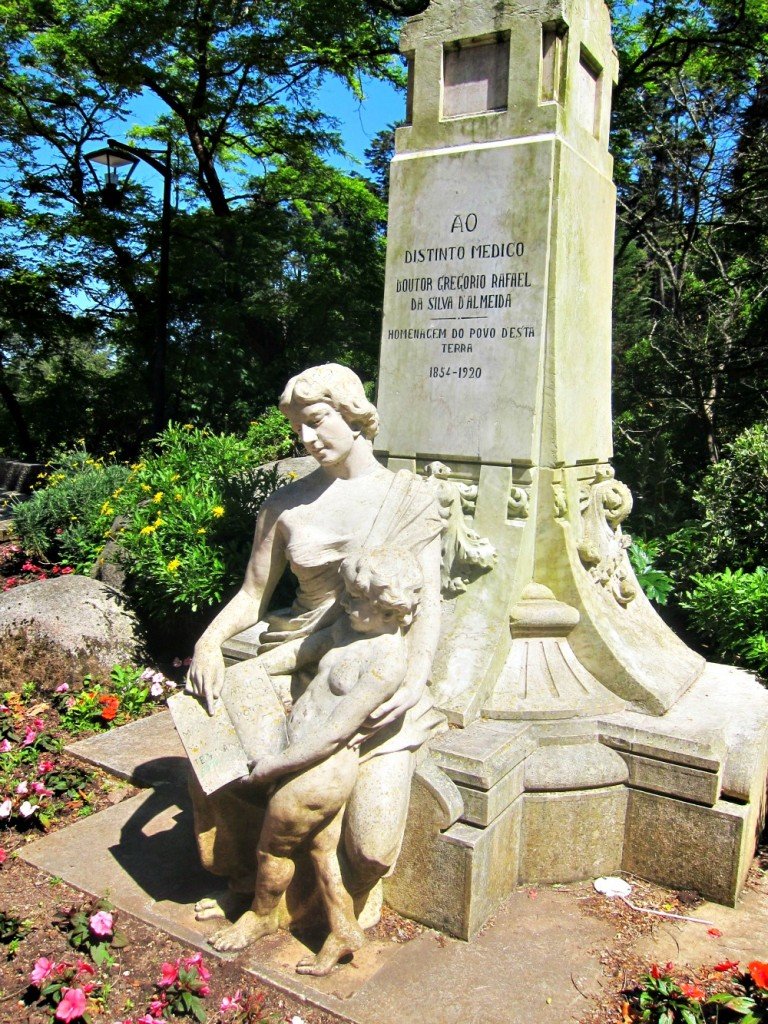
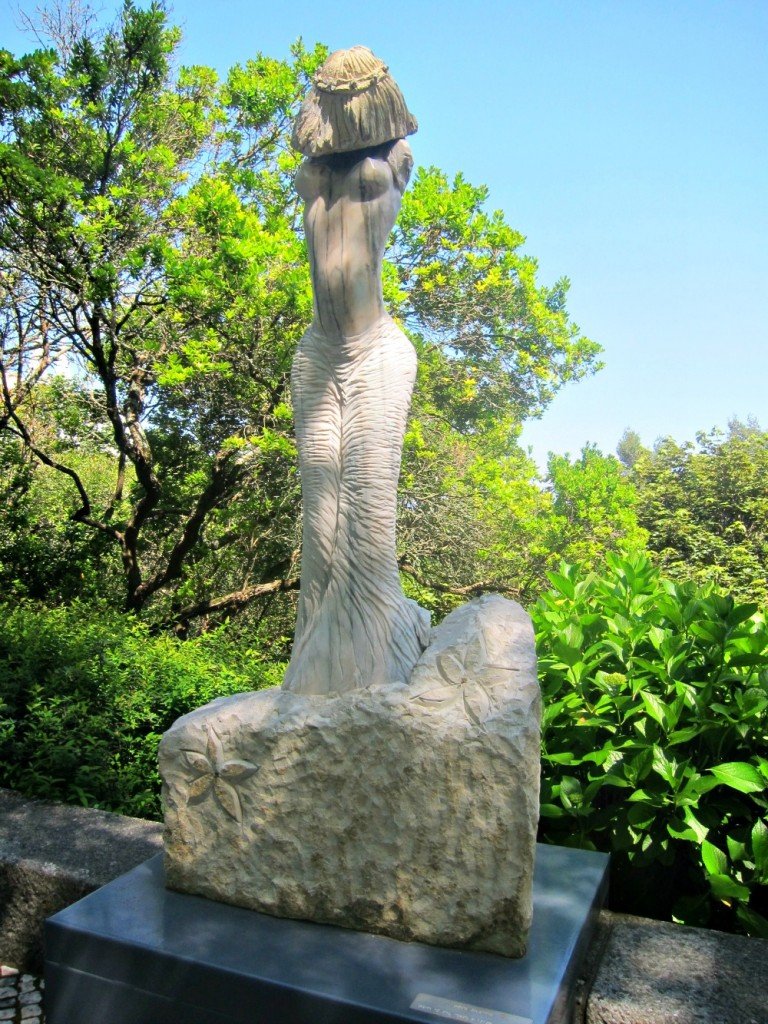
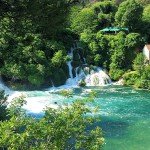





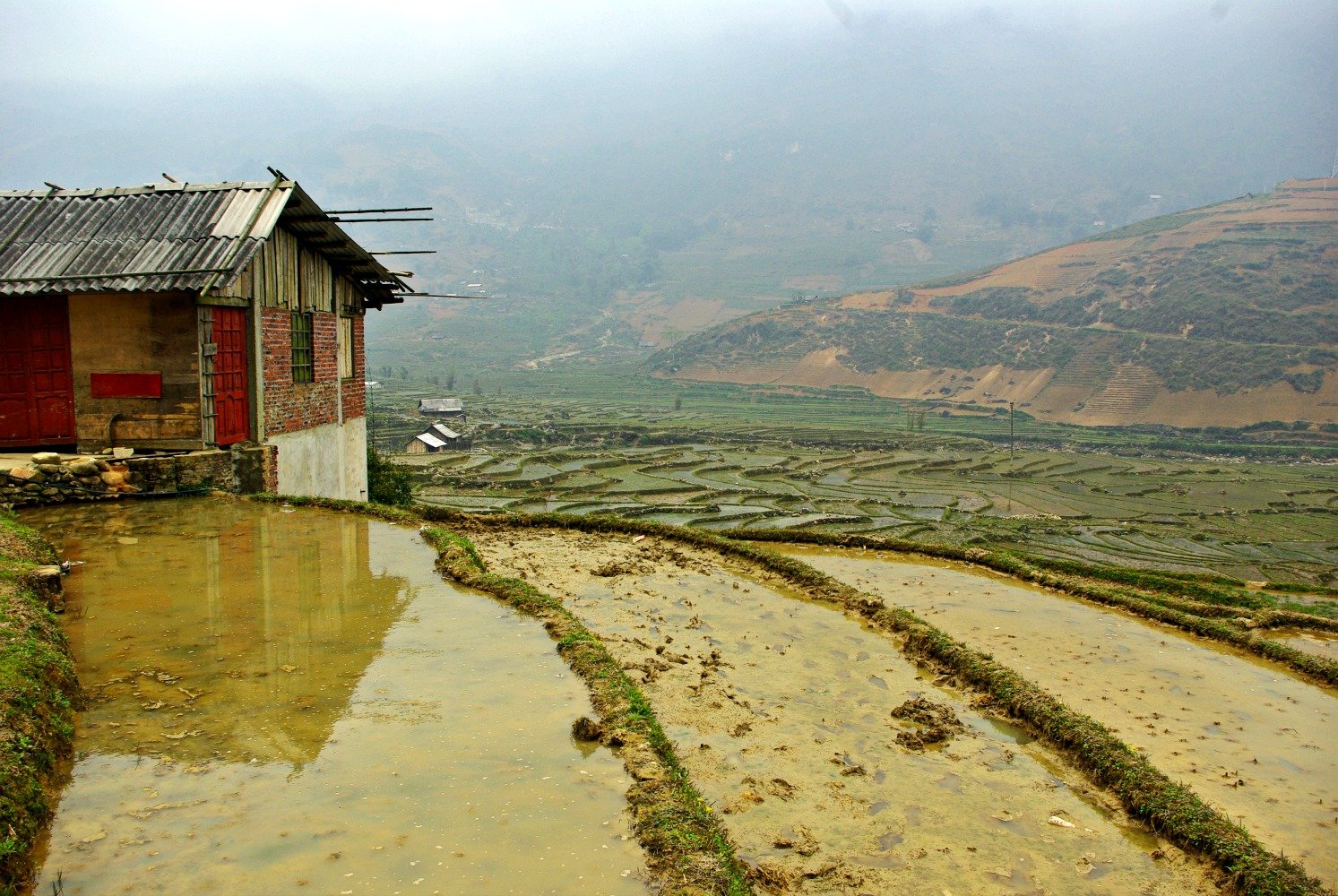 Fantastic Friday Sapa Reflections
Fantastic Friday Sapa Reflections
Sintra was our first stop in Portugal many years ago. I remember small cafes, beautiful architecture but no recollection of statues. I’m in agreement with your fave. She’s lovely.
You most probably would only have seen the statues if you walked from the Railway Station Leigh. It was a gorgeous little town. 🙂
Definitely the last statue. Such feminine curves, like a mermaid atop a heart. Your story here was so interesting and the view of Sintra through the trees conjured up many stories and places to visit.
Thanks Johanna. More views of Sintra next week 🙂
Sintra and Portugal have been on my travel wish list for a long time. I’ve only ever seen pictures of the castle so this is an interesting glimpse into the town. Beautiful architecture! I love all those statues but my favorite would have to be the Mom and Baby.
I loved Lisbon and Sintra and Cascais, but did not have time to see more. Next time I would love to go to Porto.
Portugal is moving its way higher up the travel list! If and when we do go there, I’ll definitely be adding Sintra to the list of places to visit. It sounds as though it is an interesting town to visit.
More Sintra next week Jenny. I would like to go back to Portual and do a more comprehensive trip with Porto a definite.
I was in Portugal many years ago and sadly missed Sintra. It rained very the day I was supposed to go. I loved Portugal and I look forward to return someday. For now, thanks for giving me a glimpse of it through your post. I like your favorite statue.
The town would still have been nice in the rain, but a sunny day is fantastic for the views from the hill. I am planning more posts on Sintra so stay tuned 🙂
It’s hard to pick a favorite, I like them all. But I like your pick – she’s beautiful.
Forgive my ignorance about Portugal but I didn’t realize the Moors settled there as well. Though it shouldn’t be surprising, since they were also in Spain.
They left some very beautiful buildings for sure.
Love the tiles and the Cock of Barcelos, I’ve seen it before but didn’t know the history.
Thank goodness they were in both Spain and Portugal because they left some beautiful buildings. They were also in Sicily, Malta and France (evidently).
Hi Jan,
Your post brings back lots of memory of our trip to Sintra. We were so busy looking at pottery that we missed getting a hotel room and ended up having to stay at a youth hostel, what an experience :).
Thank you for visiting pret-a-vivre.com.
That sort of mix-up adds an unexpected angle to the holiday, and usually sticks in your memory forever 🙂 Did you have to sleep in a dorm room?
I haven’t been to Portugal, but I want to go. What a gorgeous town! Can you stay overnight? My favorite statue is the one you chose. I like the whimsy lines.
You most definitely can stay overnight Nancie. It is a very tourist orientated place. In fact staying overnight would probably lend another aspect to the town – when most of the tourists have gone back to Lisbon.
Very interesting! Can’t wait to read more about Sintra. Was there a reason for all the statues?
Debbie some (probably the ones that are in the photo of the road and footpath) were there for a major art festival in the summer of 2011, but I believe they are the ones you can see in the photo of the road and footpath – still there in May 2012. I also believe that the photos shown in my post are of permanent statues. But if someone else knows more let us know.
Sintra is very high on my list of places to go. Architecture is usually a big draw for me when choosing destinations.
I really like the look of this place, and I had never heard of it before.
It is certainly worth a visit Denise – being close to, and easy to access from Lisbon.
SO beautiful!! I lived in Portugal for a couple of months as a nanny, but never saw Sintra. Would love to return. 🙂
Were they an English speaking family Krista?
Oh I love old buildings, they have so much culture and history behind them.
The statues are gorgeous – love the one where she is holding a wee little one.
And the flowers are stunning.
Sintra looks like a town worth exploring.
It was a lovely town, and the people were friendly 🙂